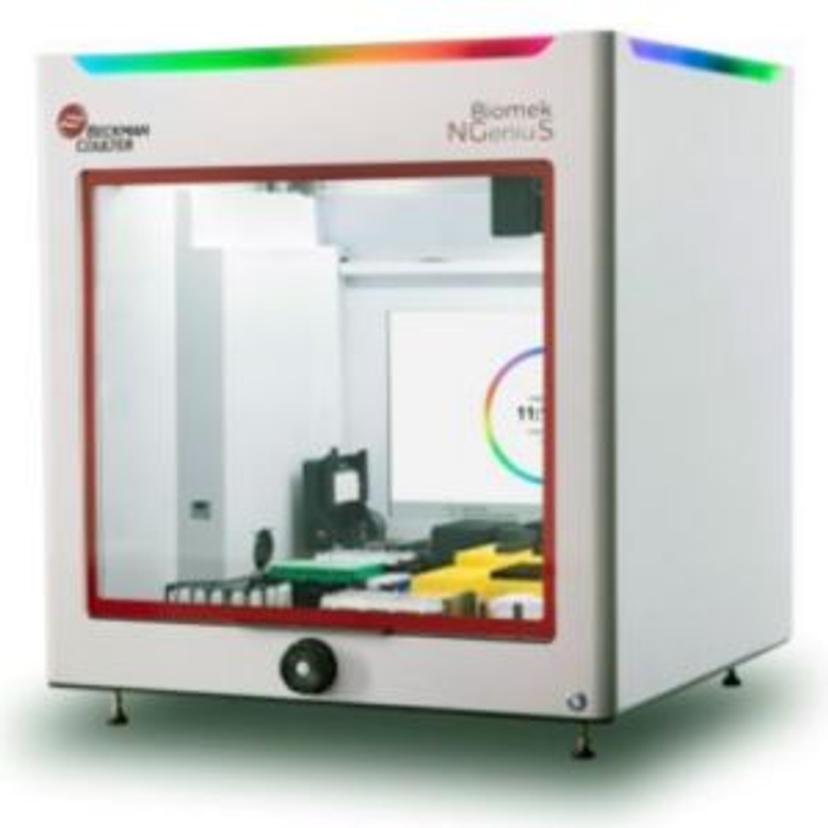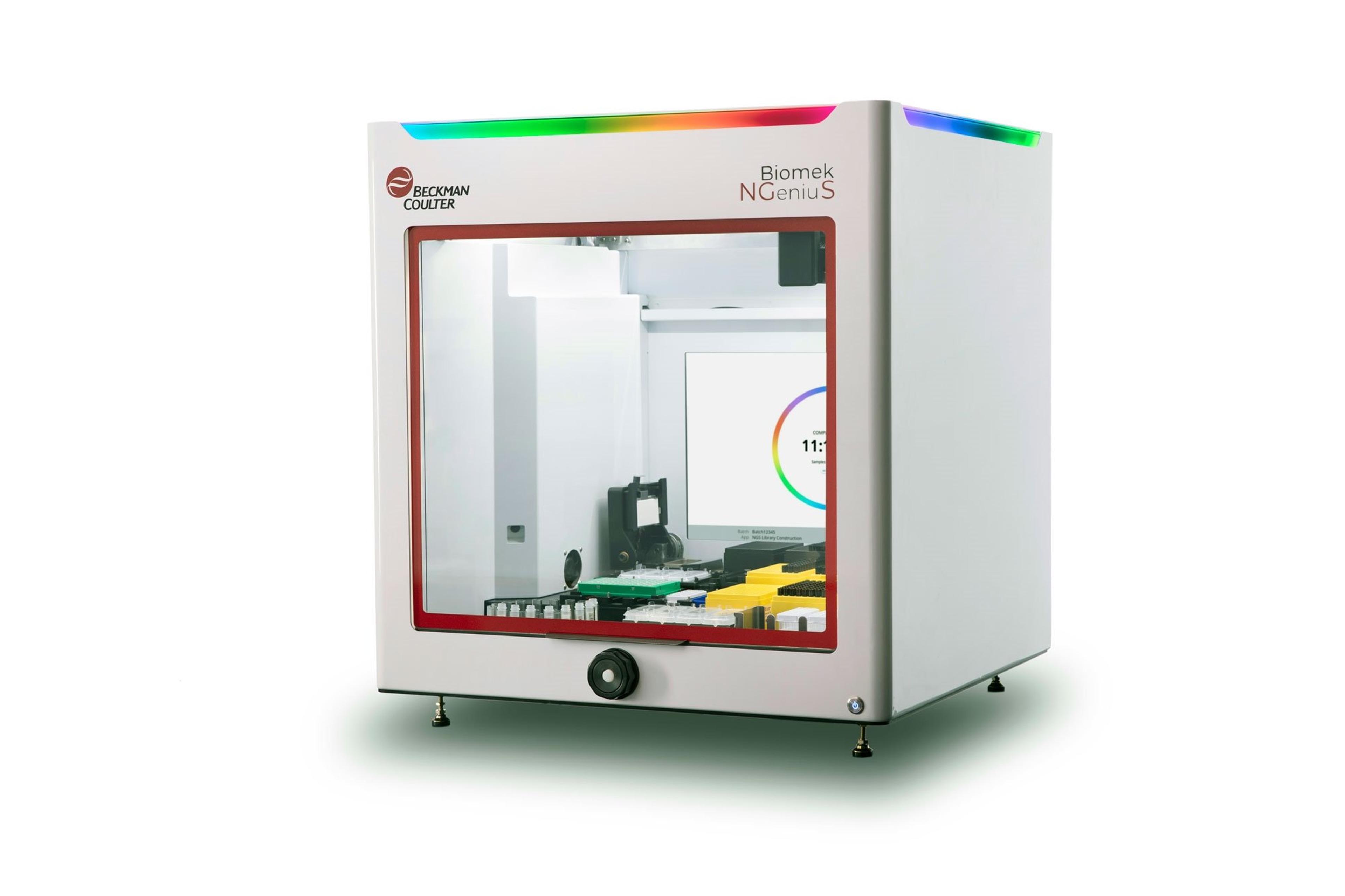Could this automated liquid handler solve your NGS library prep woes?
Learn how to free up your researchers and minimize errors with flexible, walk-away automated NGS library preparation
24 Apr 2023

Over the past two decades, advancements in next-generation sequencing (NGS) technologies have revolutionized the field of genomics, enabling scientists to sequence genomes faster, more accurately, and at a lower cost than previously imaginable. As a result, more and more laboratories have enthusiastically embraced NGS as a research tool. However, library preparation remains a key pain point.
As anyone who has manually prepared NGS libraries will know, this step of the workflow is as error prone as it is critical, requiring careful reagent tracking, precise liquid transfers, and anywhere between two hours and several days of a researcher’s time. A way to address this, is through automation.
In this article, SelectScience® speaks with Calvin Cortes, Senior Product Manager at Beckman Coulter Life Sciences, to explore the benefits of automating NGS library preparation and to learn more about the Biomek NGeniuS Next Generation Library Prep System.
Addressing NGS pain points
The benefits of switching from manual to automated NGS library preparation are many. Automated NGS is more efficient, less prone to human errors, less susceptible to contamination, and more reliable and consistent. However, not all NGS liquid handlers are equipped with the hardware and software features required to meet the needs of many modern laboratories, especially those with personnel lacking automation expertise. In developing the Biomek NGeniuS System, Cortes and his team sought to address the challenges researchers were facing with both manual methods as well as with existing automated platforms on the market.
“A pain point we heard time and time again was the need to mitigate human-associated errors, which we were told could cost upwards of $5,000 per run through the loss of reagents and time,” begins Cortes. “This, and the tedious and time-consuming nature of manual methods, was a key motivation for many researchers looking to adopt automation.”
According to Cortes, those looking to switch from manual to automated library prep were often seeking systems that were turnkey and did not require extensive programming or the use of scripting language. System flexibility was also emphasized. “One of the biggest asks was for open systems that were chemistry company agnostic and not locked into specific sample sizes,” he shares, noting that many platforms are limited to running sample sizes in multiples of eight.
The Biomek NGeniuS System solution
The Beckman Coulter Life Sciences answer to these challenges is the Biomek NGeniuS System, a purpose-built liquid handler for NGS library preparation designed around four core principles: error reduction, minimal hands-on time, flexibility, and ease of use.
Error reduction

One of the main ways in which the system minimizes error is through its Dynamic DeckOptix camera, mounted above the loading deck. “This AI-guided camera reads the deck in real-time and ensures users are correctly mounting labware,” explains Cortes. “Even if you place the reaction vessel at a slight angle or not quite square on the system, the camera is so sensitive it’ll pick it up. It also checks for capped reagent vials, incorrect sample input reaction vessels, and missing thermal cycling pads, and ensures that users have removed or at least pierced their plate covers.”
A second camera mounted on the side of the system also automatically ensures the correct reagents are loaded before use. “When you load the tubes, a carousel rotates to each tube position and this camera will read a barcode or a printed label,” explains Cortes. “As well as identifying if any required vials are missing, it also has liquid level sensing to ensure there is enough volume to move forward with the experiment.”
Hands-on time
Cortes states that one of the key differentiators of the Biomek NGeniuS System from other devices on the market is that it is truly walk-away. “After just two interaction points, you can leave the instrument for the rest of the day,” he enthuses. “You can even set up a batch at the end of the day and retrieve your samples the next morning.”
“Most platforms currently on the market still require many interaction points, including managing temperature-sensitive reagents, removing samples for thermal cycling, and switching out pipetting heads,” he continues. “In contrast, the Biomek NGeniuS System features temperature-controlled reagent storage, an integrated thermal cycler, and a selective tip type pipetting head that fits both 96 and 384 configured tip boxes.”
Labware loaded on the system is transported by an integrated gripper, and a multichannel pipette automatically performs reagent aliquoting of volumes ranging from 1 to 1000 μL. The reagent storage keeps reagents at temperatures ranging from 2°C to 65°C, and once a batch is completed, the integrated thermal cycler holds finished libraries at 4°C until the users are ready to retrieve them (up to 16 hours).
Flexibility
Another key area that sets the Biomek NGeniuS System apart from many other liquid handlers is its flexibility, both in terms of its range of compatible kits and its versatile operation. “Users can run any number of samples, using both plate- and tube-based inputs and multiple chemistries from different vendors,” explains Cortes. “The system also has a system-generated partial tip box enablement, which means users don’t have to manually transfer tips to optimize tip usage.”
A proprietary software portal provides further flexibility, allowing administrators using Google Chrome or Microsoft Edge enabled PC to remotely set up and monitor batches via the cloud. “Administrators can log on to the portal, change certain parameters, such as wash cycles and PCR time, and then launch that batch to a selected instrument for an operator to pull down and run,” he explains. “The system needs to be connected to the internet* to download batches, as well as to send back batch reports that are stored in the customer portal for tracking and traceability purposes. However, the system can go offline and it won’t crash a run. If the system falls off the internet, it will continue to run the batch to completion and the next time it connects, it will upload the batch report.”
Ease of use
Whereas other systems can require the use of programming language, the entire Biomek NGeniuS System is controlled by a single dial and can be easily operated without automation expertise, as Cortes testifies, “I’ve been out of the lab for 13 years and the first time I got in front of the system, I wasn’t given any training and was told to go set up a batch. Within 10 minutes I was able to get the system up and operational and went on all the way to successfully creating libraries. It is recommended and required to be trained on how to use the Biomek NGeniuS System before utilizing the system. It makes it so simple for the operator, which is particularly beneficial for labs with graduate students – it’s virtually unbreakable,” he adds.
Cost per sample
Despite addressing many of the challenges posed by automated NGS, the Biomek NGeniuS System has an average cost per sample equivalent to, or lower than, most comparable instruments on the market. “It averages between $4 and $7, depending on how many samples you run, which is similar to around $5 to $10 that we see in other systems,” says Cortes. “We didn't want to make this cost prohibitive, and when we analyzed overall cost on consumables, we kept it between 5 and 10% of the overall costs per sample, with most of the cost coming from the kit.”
Expanding applications
As well as enabling batch setup and monitoring, the Biomek NGeniuS System online portal houses a library of demonstrated NGS library prep methods for both DNA and RNA sequencing, with six developed methods including Illumina DNA prep, Roche KAPA HyperPlus, Roche KAPA HyperPrep, NEBNext® Ultra™ II Directional RNA, IDT xGen™ cfDNA & FFPE DNA Library Prep MC kit, and the Agilent SureSelect XT Human All Exon v6. “Plans are already underway to expand this method portfolio, both using our internal team of application scientists and through partnerships with reagent kit vendors,” Cortes enthuses. “Illumina, IDT (Integrated DNA Technologies), PGDx (Personal Genome Diagnostics), Pillar Biosciences, and Oxford Nanopore Technologies are all new partners that we’ve announced, and we’re announcing others soon.”
It gives back so much time to the scientists on the bench – so that they can get back to the science they were hired to do.
Early success
Since its launch last year, the Biomek NGeniuS System has already made a significant impact in many small-to medium-sized translational labs, and Cortes highlights one of the system’s earliest successes. “The second instrument we ever installed was unboxed and set up the same day, and the lab then attempted to push the instrument to its limits by running 24 samples with the lowest input of one nanogram,” he says. “They didn’t monitor the instrument and left it running overnight, only to return to some amazing high-yield libraries with better quality than they were able to demonstrate in their own application note. I think that speaks volumes to the robustness of our system demonstrations. We really take it to the upper and lower limits. Ultimately, the Biomek NGeniuS System significantly reduces 8 hours of tedious hands-on time and tasks prone to human error, which is truly amazing. It gives back so much time to the scientists on the bench – so that they can get back to the science they were hired to do.”
*Requires Google Chrome or Microsoft Edge on an enabled computer. Products and demonstrated applications are not intended or validated for use in diagnostic procedures.

